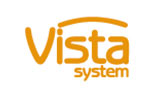We are moving from December 11th to December 15th. Please note a delay in responses but we will get back to you as soon as possible.
We are moving from December 11th to December 15th. Please note a delay in responses but we will get back to you as soon as possible.
The Americans with Disabilities Act requires businesses to have specific signs that help those with disabilities have the same opportunity to interact within your business facility as employees and visitors. ADA signs are required by law and have many benefits for your business as they ensure a safe, easy to navigate and accessible building.
Many misconceptions exist about the definition of an ADA compliant sign. Business owners or managers are challenged to ensure their signs follow the law without having a strong understanding of the federal requirements. That’s where we come in. At Jacksonville Signs & Graphics, we can help you determine if your signs are compliant and design effective custom ADA signs that make your building accessible to all.
While Braille is an important part of ADA compliance, not all Braille signs will be ADA compliant. That’s because the ADA also requires signs to be a certain height from the ground, have good contrast and clear font to help with readability, and other features that make the signs more accessible. In a twist on compliance, some signs need to be ADA compliant, while others do not.
If you simply assume that a sign is ADA compliant or that a sign does not need to meet the federal law, you may end up on the wrong side of the regulations.
The penalty for not having ADA signs depends on whether it is your first violation of the ADA. If it is your business’ first violation the maximum fine you could be hit with is $75,000. If you have a second or subsequent violation the maximum fine is $150,000. Each sign may be considered a different violation of the ADA.
The penalties a business experiences may not be strictly legal. Customers who have disabilities may think negatively of your business if they see that you are displaying non-compliant signs. Even more troubling, customers with disabilities may decide not to buy from your business or share negative reviews if they can’t get around your property easily.
ADA signage is required, but that doesn’t mean it has to be boring. Several key sign types need to be ADA compliant, including entry and exit signs, door signs and restroom signs. Customers do judge your business based on these signs, and they contribute to the overall look and feel of your property. With our assistance, you can display signs that reflect well on your business and create the atmosphere that welcomes all. Contact us today to receive a free quote.
ADA stands for the Americans with Disabilities Act. It was originally passed by Congress in 1990 but has since received many updates. Today, the Act continues to make spaces accessible for people with physical, auditory, visual, and cognitive disabilities.
The Act applies to most commercial establishments (such as offices, restaurants, stores, and hospitals) that regularly receive visitors.
The ADA has one goal: to make spaces accessible, safe, and non-discriminatory for people with disabilities. It does not outline an exact list of signs that must be installed; rather, you have to ensure sufficient signage for your establishment.
Some of the most common signs that are required are:
Depending on your premises, other ADA signs may be necessary. Speak to an experienced professional to understand which signs you need.
ADA signs are required in those parts of the building used for a specific purpose for more than seven days (such as a conference room, or individual offices in a building).
Practically that means ADA signs are required at the vast majority of commercial premises, including businesses such as:
Cost varies depending on the size of the sign, the complexity of the design, and how many you need. The cost of braille signs will increase as you increase the size of the sign and add custom design elements.
ADA signs are available in a variety of materials, including:
Some materials, such as plastic, are more suited for indoor use. Others, like metal, can withstand weather and can be used outdoors safely. If you are using a non-standard material for your signs, make sure it complies with the ADA’s 70% contrast and non-glare finish requirements.
The ADA has a long list of requirements for signs to be compliant. For the most up-to-date, accurate information, speak to us today. Some features that your sign must have in order to be compliant are:
Installing ADA signs is like installing any other sign. Indoor signs can be mounted on spacers or installed directly on the wall. Outdoor signs may be installed on a wall or a pole embedded in concrete or earth.
It’s best to have signs installed by professionals because there are strict requirements about where signs should be installed. You also need to ensure that the mounting method doesn’t affect the sign’s legibility (such as shiny metal screw heads).
Most ADA signs are required to carry braille and raised lettering on the sign face. It’s why a lot of business owners choose to install two signs: one branded sign and one ADA-compliant sign with braille.
In addition to having braille, your sign must be easily reachable, so someone can walk up to it and read it by touch.











